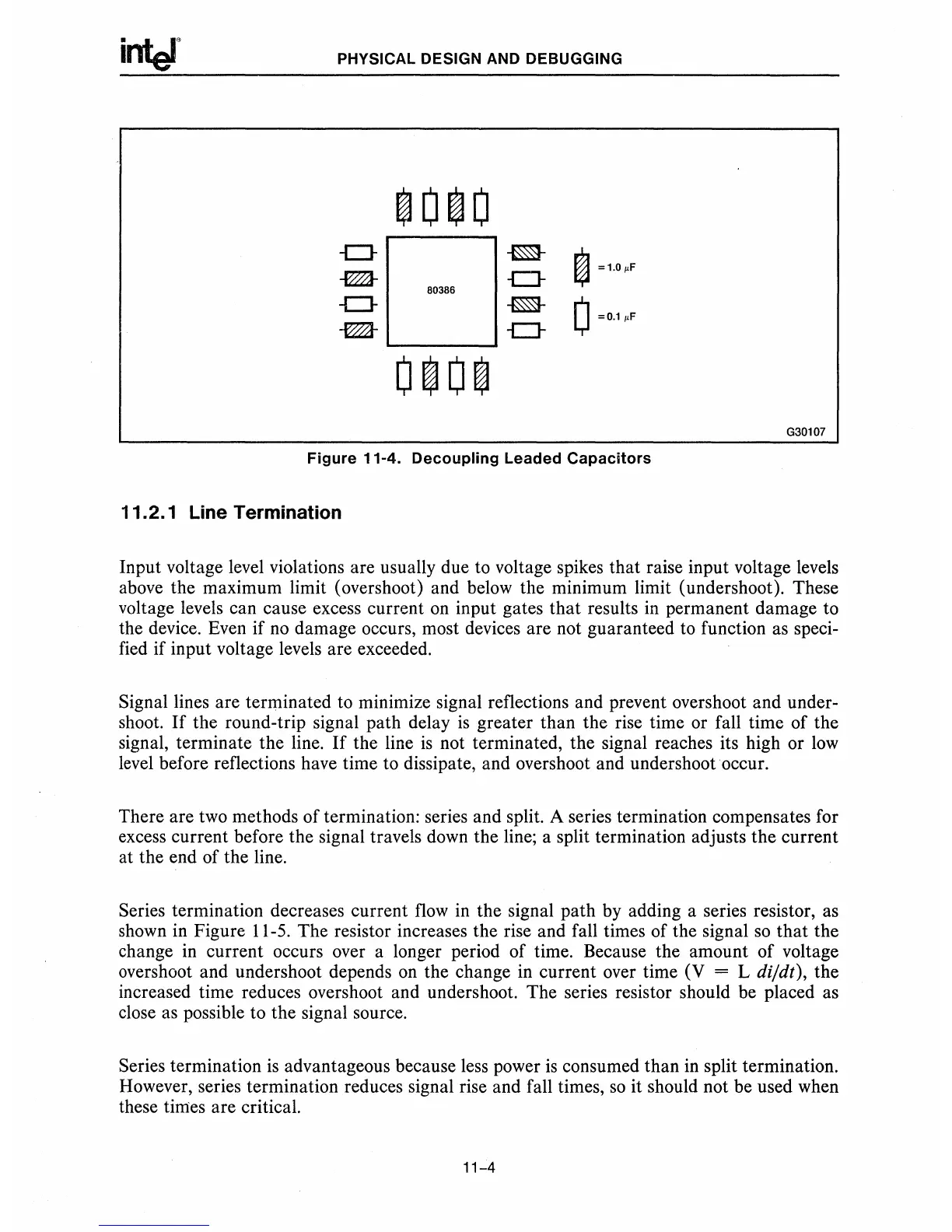PHYSICAL DESIGN AND DEBUGGING
~
=1.0"F
o
=O.I"F
Figure 11-4. Decoupling Leaded Capacitors
11.2.1 Line Termination
G30107
Input voltage level violations are usually due to voltage spikes that raise input voltage levels
above the maximum limit (overshoot) and below the minimum limit (undershoot). These
voltage levels can cause excess current
on
input gates that results in permanent damage to
the device. Even if
no
damage occurs, most devices are not guaranteed to function
as
speci-
fied if input voltage levels are exceeded.
Signal lines are terminated to minimize signal reflections and prevent overshoot and under-
shoot.
If
the round-trip signal path delay
is
greater than the rise time or fall time of the
signal, terminate the line.
If
the line
is
not terminated, the signal reaches its high or
low
level before reflections have time to dissipate, and overshoot and undershoot occur.
There are two methods of termination: series and split. A series termination compensates for
excess current before the signal travels down the line; a split termination adjusts the current
at the end of the line.
Series termination decreases current
flow
in the signal path by adding a series resistor, as
shown in Figure 11-5. The resistor increases the rise and fall times of the signal
so
that
the
change in current occurs over a longer period of time. Because the amount
of
voltage
overshoot and undershoot depends
on
the change in current over time (V = L dijdt), the
increased time reduces overshoot and undershoot. The series resistor should be placed as
close as possible to the signal source.
Series termination
is
advantageous because less power
is
consumed than
in
split termination.
However, series termination reduces signal rise and fall times,
so
it should not be used when
these
times are critical.
11-4

